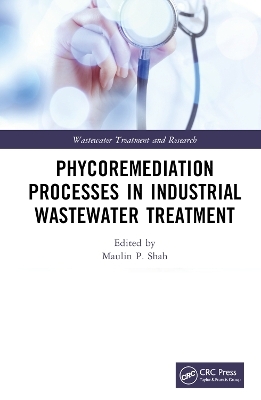
Phycoremediation Processes in Industrial Wastewater Treatment
CRC Press (Verlag)
978-0-367-76007-6 (ISBN)
Features:
(1) Deals with the most emerging aspects of algal research with special reference to phycoremediation.
(2) Studies in depth diversity, mutations, genomics and metagenomics study
(3) An eco-physiology, culturing, microalgae for food and feed, biofuel production, harvesting of microalgae, separation and purification of biochemicals.
Maulin P. Shah is very interested in genetic adaptation processes in bacteria, the mechanisms by which they deal with toxic substances, how they react to pollution in general and how we can apply microbial processes in a useful way (like bacterial bioreporters). One of his major interests is to study how bacteria evolve and adapt to use organic pollutants as novel growth substrates. Bacteria with new degradation capabilities are often selected in polluted environments and have accumulated small (mutations) and large genetic changes (transpositions, recombination, and horizontally transferred elements). His work has been focused to assess the impact of industrial pollution on microbial diversity of wastewater following cultivation dependant and cultivation independent analysis. He has more than 280 research publication in highly reputed national and international journals. He is Editorial Board Member in CLEAN-Soil, Air, Water- Wiley, Current Pollution Reports- Springer Nature, Environmental Technology & Innovation-Elsevier, Journal of Biotechnology & Biotechnological Equipment-Taylor & Francis, Current Microbiology- Springer Nature, Eco toxicology (Microbial Eco toxicology)-Springer Nature, Geo Microbiology- Taylor & Francis , Applied Water Science - Springer Nature, Archives of Microbiology-Springer, Journal of Applied Microbiology-Wiley, Letters in Applied Microbiology-Wiley, Green Technology, Resilience and Sustainability-Springer, Biomass Conversion & Bio refinery-Springer, Journal of Basic Microbiology-Wiley, Energy Nexus-Elsevier, e Prime – Elsevier, IET Nano biotechnology-Wiley, Cleaner and Circular Bioeconomy – Elsevier, International Microbiology - Springer has edited 75 books in wastewater microbiology, industrial wastewater treatment. He has edited 20 special issues on Industrial Wastewater Treatment & Research theme on highly impact factor journals with Elsevier, Springer, Wiley, Taylor & Francis.
Chapter 1: Addressing the Strategies of Algal Biomass Production with Wastewater Treatment
Chapter 2: Recent progress of phytoremediation-based Technologies for industrial wastewater treatment
Chapter 3: Microalgae as Biological cleanser for waste water treatment
Chapter 4: Phycoremediation of Toxic Metals for Industrial Effluent Treatment
Chapter 5: Algal Biomass Production Coupled to Wastewater Treatment
Chapter 6: Photobioreactor in Waste Water Treatment: Design and Operational features
Chapter 7: Genetic Engineering of Algae
Chapter 8: Immobilized Micro Algae For Removing Waste Water Pollutants And Ecotoxicological View Of Adsorbed Nanoparticles – An Overview
Chapter 9: Tailoring Microalgae for Efficient Biofuel Production
| Erscheinungsdatum | 28.04.2023 |
|---|---|
| Reihe/Serie | Wastewater Treatment and Research |
| Zusatzinfo | 13 Tables, black and white; 16 Line drawings, color; 6 Line drawings, black and white; 16 Illustrations, color; 6 Illustrations, black and white |
| Verlagsort | London |
| Sprache | englisch |
| Maße | 156 x 234 mm |
| Gewicht | 360 g |
| Themenwelt | Naturwissenschaften ► Biologie ► Botanik |
| Naturwissenschaften ► Geowissenschaften ► Hydrologie / Ozeanografie | |
| Technik ► Umwelttechnik / Biotechnologie | |
| Weitere Fachgebiete ► Land- / Forstwirtschaft / Fischerei | |
| ISBN-10 | 0-367-76007-X / 036776007X |
| ISBN-13 | 978-0-367-76007-6 / 9780367760076 |
| Zustand | Neuware |
| Informationen gemäß Produktsicherheitsverordnung (GPSR) | |
| Haben Sie eine Frage zum Produkt? |
aus dem Bereich


